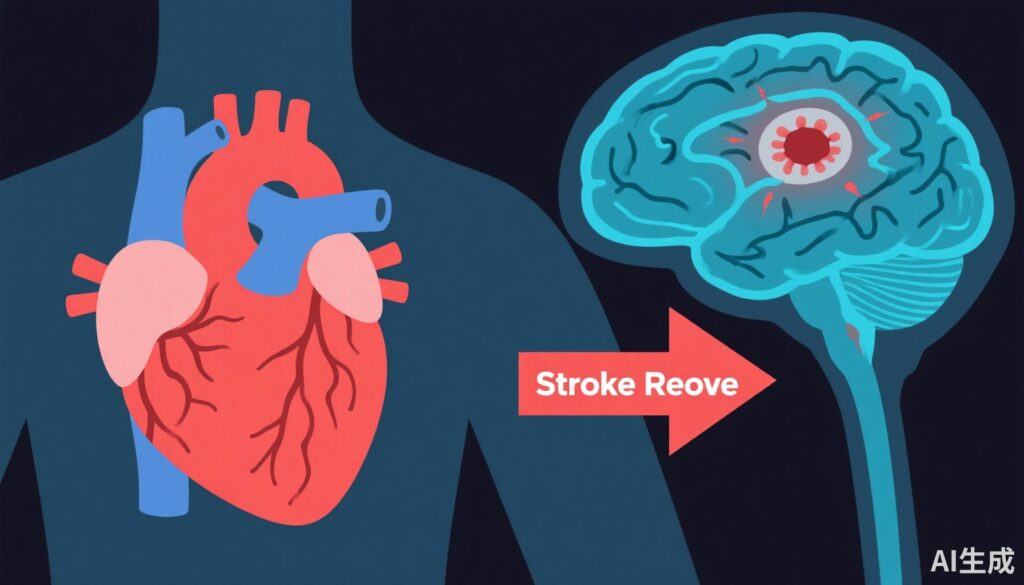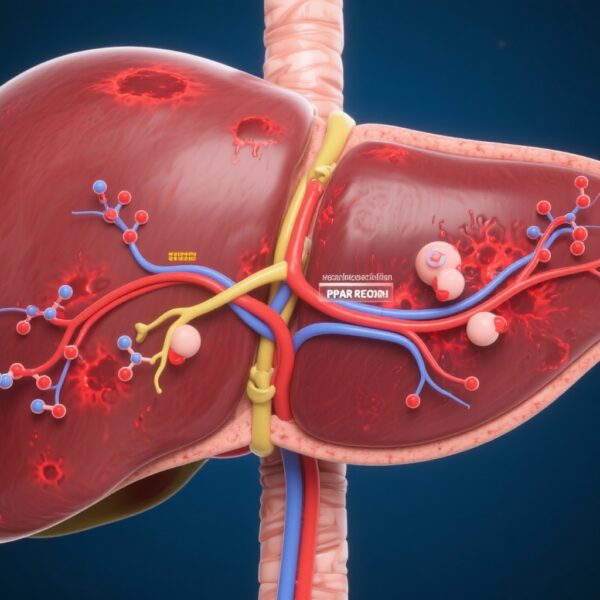Highlight
- Secondary analysis of ARCADIA trial data evaluated recurrent ischemic stroke risk in patients with left ventricular (LV) systolic dysfunction after cryptogenic stroke.
- LV systolic dysfunction was not independently associated with increased recurrent stroke risk after adjustment for confounders.
- Apixaban significantly reduced the risk of recurrent ischemic stroke compared with aspirin in patients with LV systolic dysfunction.
- No significant benefit of apixaban over aspirin was observed in patients without LV systolic dysfunction.
Study Background
Stroke remains a leading cause of morbidity and mortality worldwide, with recurrent strokes contributing significantly to disability and healthcare costs. Cryptogenic stroke, in which no clear etiology is identified despite thorough evaluation, accounts for about 20-30% of ischemic strokes. Identifying patients at higher risk of recurrence in this subgroup is crucial to optimizing secondary prevention.
Left ventricular (LV) systolic dysfunction, characterized by reduced myocardial contractility, is a known risk factor for cardioembolic stroke due to thrombus formation in the poorly contracting ventricle. However, the precise relationship between LV dysfunction and recurrent stroke risk remains uncertain, especially among patients without overt atrial fibrillation. Moreover, the optimal antithrombotic therapy—whether anticoagulation or antiplatelet agents—is unclear in this population for secondary stroke prevention.
The ARCADIA trial (Atrial Cardiopathy and Antithrombotic Drugs in Prevention After Cryptogenic Stroke) originally evaluated apixaban versus aspirin in patients with cryptogenic stroke and atrial cardiopathy. This secondary analysis focuses on a subgroup with LV systolic dysfunction to clarify the impact of LV dysfunction on stroke recurrence and the comparative effectiveness of apixaban.
Study Design
This post hoc analysis utilized data from the ARCADIA trial, a randomized, multicenter study conducted across 185 sites in the United States and Canada. The parent trial enrolled 1,015 patients who experienced a recent cryptogenic stroke and met criteria for atrial cardiopathy.
LV systolic function was centrally assessed by echocardiograms submitted for blinded review. LV systolic dysfunction was defined by any of the following criteria: LV fractional shortening less than 25%, LV ejection fraction below 50%, or presence of wall motion abnormalities.
Among the 964 patients with complete echocardiography data, 165 (17.1%) exhibited LV systolic dysfunction. These patients were followed for a mean of 1.7 years. The primary outcome was recurrent ischemic stroke during this follow-up.
The analysis employed Cox proportional hazards models to:
– Determine the association between LV systolic dysfunction and recurrent stroke,
– Compare the effect of apixaban versus aspirin on recurrent stroke risk stratified by LV dysfunction status,
controlling potential confounders identified in baseline characteristics.
Key Findings
Of the 964 patients analyzed, recurrent ischemic stroke occurred in 65 (6.7%) overall, with higher crude rates in those with LV systolic dysfunction (15/165, 9.1%) compared to those without (50/799, 6.3%).
In unadjusted analyses, LV systolic dysfunction appeared associated with increased recurrent stroke risk; however, after adjusting for imbalanced covariates such as age, sex, and other vascular risk factors, this association was not statistically significant (adjusted hazard ratio [HR] 1.3; 95% confidence interval [CI], 0.7–2.4).
Importantly, treatment effect varied significantly by LV function status (P for interaction = 0.028):
– In patients with LV systolic dysfunction, apixaban substantially lowered recurrent ischemic stroke risk compared to aspirin (HR 0.24; 95% CI, 0.07–0.87), indicating a 76% relative risk reduction.
– In contrast, among patients without LV systolic dysfunction, there was no significant difference between apixaban and aspirin (HR 1.13; 95% CI, 0.65–1.96).
These findings suggest that anticoagulation with apixaban may be particularly beneficial in cryptogenic stroke patients who also have LV systolic dysfunction. Safety outcomes and bleeding risk comparison were not detailed in this secondary report but remain important considerations.
Expert Commentary
This secondary analysis provides clinically relevant insights that could influence secondary stroke prevention strategies in a targeted high-risk subgroup. LV systolic dysfunction is an established mechanism for cardioembolic stroke through mural thrombus formation and embolization. The observed preferential benefit of apixaban supports the biological plausibility that anticoagulation more effectively prevents thromboembolism originating from damaged ventricular myocardium than antiplatelet therapy alone.
Limitations inherent to post hoc analyses include potential residual confounding and limited power to assess all outcomes or safety endpoints. The parent ARCADIA trial was designed primarily to assess atrial cardiopathy, not LV dysfunction, so findings require cautious interpretation. Confirmatory prospective studies focused on LV dysfunction are warranted.
Additionally, failure to show an independent association of LV dysfunction with recurrence after adjustment suggests that LV systolic dysfunction may interact with other vascular risk factors or conditions influencing recurrence risk. Patient selection criteria and echocardiographic thresholds also impact generalizability.
In clinical practice, these results underscore the need for comprehensive echocardiographic evaluation in cryptogenic stroke patients. Identifying LV systolic dysfunction could guide personalized anticoagulation use to optimize secondary prevention.
Conclusion
The secondary analysis from the ARCADIA trial indicates that in patients with cryptogenic stroke, the presence of LV systolic dysfunction may identify a subgroup that significantly benefits from anticoagulation with apixaban over aspirin to reduce recurrent ischemic stroke risk. While LV dysfunction alone did not independently predict recurrence after adjustment, its interaction with treatment effect is noteworthy. These findings advocate for further prospective research and consideration of anticoagulation in selected cryptogenic stroke patients with impaired LV systolic function.
Reference:
Sharma R, Jillella D, Zhang C, Elkind MSV, Kamel H, Di Tullio MR, Kronmal RA, Krishnaiah B, Yaghi S, Longstreth WT Jr, Tirschwell DL, Merkler AE, Nahab F. Apixaban and Recurrent Stroke Risk With Left Ventricular Dysfunction: A Secondary Analysis of the ARCADIA Trial. Stroke. 2025 Nov;56(11):3118-3126. doi: 10.1161/STROKEAHA.125.052724 . Epub 2025 Sep 2. PMID: 40891365



